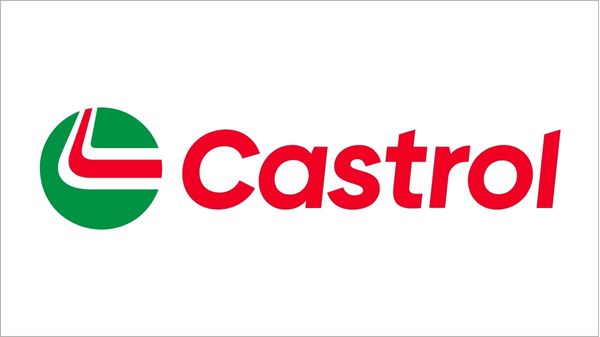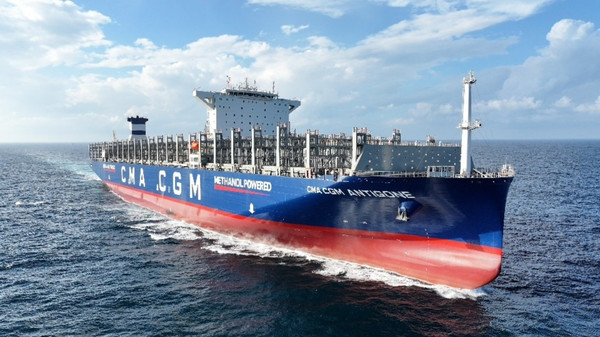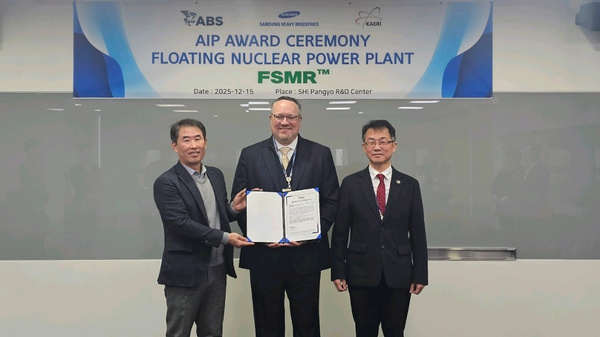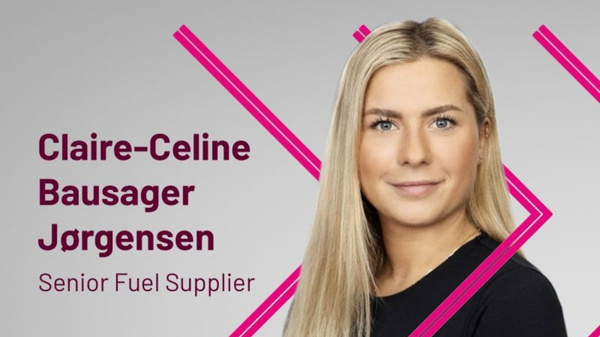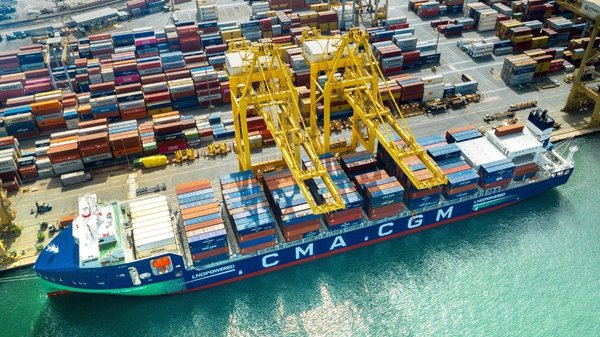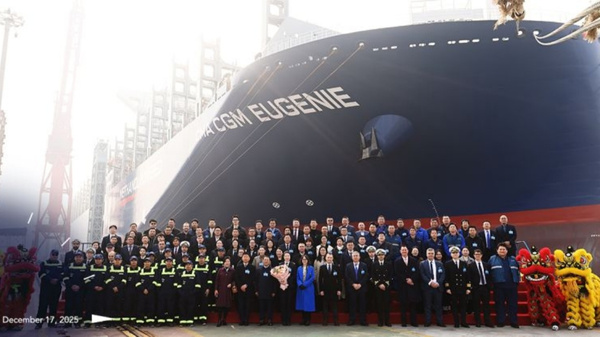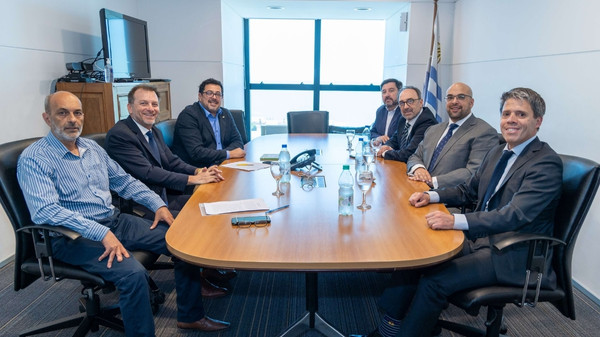The
Singapore International Bunkering Conference (SIBCON) was the venue for the international launch of a new bunker fuel oil metering solution which has been developed by global technology group
Invensys Process Systems (IPS) and is sponsored by
BP Marine Fuels.
In a statement released by IPS, the company claims the accurate measurement all bunker fuel oil delivered to ships can now be guaranteed, much in the same way as a petrol pump measures the delivery of petrol to a car. The benefits are far reaching and include increased efficiency and improved safety for personnel. IPS now hopes that the technology will now be adopted throughout the worldwide shipping industry.
The metering of bunker fuel oil represents a series of difficult technical challenges, but BP believes that by employing advanced technology the arcane practice of manually measuring or "dipping" the amount of bunker fuel oil on a fuel barge will be consigned to the past.
According to IPS, ship owners can, for the first time, reconcile the volume of bunker fuel oil delivered without the requirement for inspection.
The system is said to be simple to operate and include the added benefit of increasing the overall efficiency of the bunker fuel transfer process with the possibility of eliminating conventional paperwork in the future.
The process began two years ago when BP Marine Fuels embarked on a research project to investigate the feasibility of using metering technology to measure the delivery of bunker fuel oil to ships. The company appointed an independent consultant to evaluate all available technologies.
The industry view was that
Coriolis meters [pictured], the alternative metering technology, were very unreliable and expensive. Also some doubt was expressed by industry experts that Coriolis meters would be adversely affected by the vibration present on bunker fuel oil barges.
However, after detailed discussions with BP's own exploration & production, refining and chemical divisions it was suggested, based on their extensive experience that Coriolis meters were in fact more economical and likely to be far more reliable.
In order to arrive at a definitive solution BP developed a basic statement of requirements, which in the company's view defined the ideal metering technology. The statement of requirements stated that for single phase flow an accuracy of 0.1% was required and for two phase flow an accuracy of 0.5%.
An invitation was then sent to potential partner / vendors to submit details of those metering products that complied with the basic statement of requirements. This prompted four vendors to put forward their Coriolis meters for evaluation.
An initial review determined that only one vendor, Invensys Process Systems (IPS), was able to meet the requirements and as a consequence the
‘Foxboro’ Coriolis meter was evaluated at the
National Engineering Laboratory. IPS funded the trial with the aim of gaining endorsement of the system within the bunker industry.
The difficulty in measuring bunker fuel oil is caused principally by air retention, but the Foxboro Coriolis meter is said to have the ability to “see” the entrapped air and therefore accurately measure the volume of bunker fuel oil.
There are a number of reasons why air becomes suspended in bunker fuel oil. Fuel oil remaining in the bottom of the tank may draw air as the tank is pumped dry or stripped. Bunker fuel oil is highly viscous and this can cause the pump to draw a heavy vacuum on the suction side.
In some circumstances this can draw air into the gland of the pump. Compressed air is introduced into the transfer hose when it is blown clear just prior to disconnection. This practice prevents the spillage of bunker fuel oil on the deck when the hose is removed.
Air suspension can even be caused by the way in which the barge tank is filled. For example, drop loading and splashing can all contribute to this problem. Once air is entrained within the bunker fuel oil it can take several hours for it to come out of suspension - the temperature and hence the viscosity of the product is the key variable.
The next stage was to develop an open skid standardised design which would house the meter.
The development team believed that a container sized skid could be designed so that it could be easily connected and disconnected from the barge deck. Creating a lock and load system with a barge having a pre assigned mounting area where the skid would be secured to it deck was essential.
The barge flanges would have to connect to the meter lines with simple and quick mounting arrangements plus two or three plug-in connection points for power and data. The skid had to be simply transported by lorry so that the Foxboro Coriolis meter could be periodically maintained and tested.
It was essential that the integrity of the meter was not compromised and that the system was both visible and secure. If a spot check were to be conducted on the accuracy of the Foxboro Coriolis meter,the skid would have to be removed from the barge quickly and replaced with a skid carrying an alternative.
A skid design was approved and manufactured by IPS. The company said that future skids will comply with the same design, ensuring that the same basic layout is replicated throughout the world.
The marinisation phase of the trial was to ensure that the results obtained in the laboratory could be replicated in the "real world" working with the Singapore Maritime Port Authority nominated barge and the BP barge "
Pride".
To date, IPS says there have been fifty deliveries all of which are reported to have shown a high level of constancy with barge “soundings”. Although some initial problems were experienced in the field these were addressed and resolved by IPS as they continued to evaluate the performance of the Foxboro Coriolis meter.
The next step will be for IPS to develop a
BRIE (Receipt Issuing Equipment) which will record data in order to produce and electronic delivery note, an important development on the road to a fully automated custody transfer and accounting system.
If adopted by bunker barge owners, IPS says the Foxboro Coriolis meter would be purchased together with a licensing arrangement managed by the
International Bunker Industry Association (IBIA).
Each year an annual fee would be paid to maintain the integrity of the Foxboro Coriolis meter. Barge owners would recover their capital investment and the integrity management charge through a surcharge of on the bunker fuel oil supplied, according to IPS.
Commenting on the new metering system, BP Marine Fuels CEO, Graeme Alexander said “Our efforts and those of our technology partner Invensys Process Systems, have now resulted in a bunker fuel oil metering system that can truly claim to provide irrefutable measurement results. We now hand over the baton to IBIA to encourage the role-out of the technology worldwide.”
Don Gregory, Director Sustainability & Fuel Technology at BP Marine Fuels said, "We have taken this initiative to drive forward the use technology within the bunkering industry to develop, with our partners, a metering system that is both accurate and reliable. However, it has always been BP Marine Fuel’s intention handover stewardship of the metering technology to IBIA and encourage its widespread adoption for the benefit of all stakeholders in the bunker industry."
In the future, IPS believes that the measurement data captured by the Foxboro Coriolis meter can be transferred to a central location where bunker fuel oil expenditure and usage can be monitored centrally.
"This type of data interchange allows the real-time monitoring of bunker fuel oil deliveries from multiple ships worldwide. It will therefore be of interest to ship owners and charterers in addition to port authorities who would be able to monitor bunker fuel oil deliveries," IPS said in a statement.
IPS believes the benefits for the barge operator are principally faster turn-around which in turn should improving cash flow and reducing working capital.

